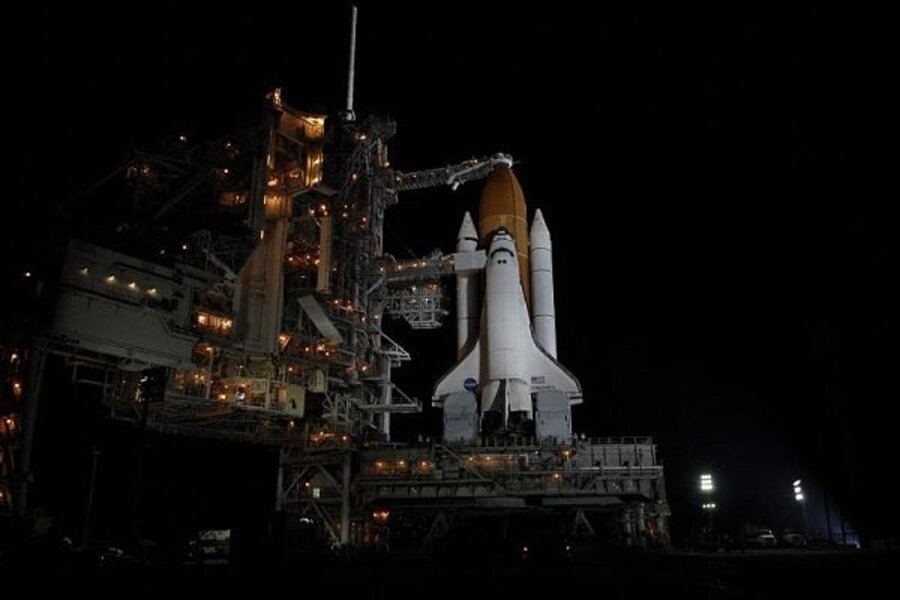Another pesky problem for space shuttle Discovery
Loading...
NASA's Mike Moses puts things in perspective: "That's life in the space business."
That's the postscript Mr. Moses -- who chairs the agency's pre-flight mission-management team -- put on today's announcement that the space shuttle Discovery will sit on the pad for another few days. The reason: a leaking hydrogen line controllers detected as they were filling the orbiter's external tank with liquid hydrogen and liquid oxygen.
Valves in hydrogen lines seem to be this mission's betes noires.
First it was an issue with a missing chunk of metal from an over-stressed valve along a line that helps keep the hydrogen tank pressurized during launch. The incident happened during last November's mission. But it led mission managers to have similar valves on Discovery replaced. That prompted a one-month launch delay.
Now it's a valve along a line that bleeds excess hydrogen gas from the fuel tank as it's being filled with liquid variety.
The good news: Available evidence indicates that the leak does not involve hardware on the orbiter, but rather on the "ground" side of the fueling process. That makes it easier to troubleshoot.
The not-so-good news: Depending on how long it takes to identify the problem and fix it, this mission -- with its critical payload, a 15.5-ton set of solar panels and their support truss -- may have to wait until April to launch.
Leaks in the hydrogen venting line have cropped up before during fueling, says shuttle launch director Mike Leinbach. But in the past, controllers would opened and shut the valve a few times and the leak would vanish. Loose ice maybe? Or a piece of gunk?
This time it was anything but an open-and-shut-and-open case. "We've never seen a leak this big before. It was off the scales," Mr. Leinbach says.
The crew never was at risk; it hadn't arrived at the launch pad yet. But hydrogen and air are an explosive mix. Just ask the captain of the Hindenberg. If hydrogen concentrations at the pad exceed stringent limits, NASA scrubs the launch.
Engineers suspect that the valve may have been reacting to the rapidly falling temperature in the tank as the liquid hydrogen approached the top. The leak only showed up near the end of the process, as technicians eased topped off the tank.
Mission managers say they won't have a better handle on the problem until Friday, after the shuttle's tanks are drained of fuel and technicians can inspect hardware. For now, the first available launch date has been set to March 15 -- the Ides of March for Julius Caesar fans.
Shuttle managers figure they have until March 17 to get the orbiter off the ground. They are hemmed in by other launch commitments at the Kennedy Space Center and a fast approaching launch date for a Russian station-resupply mission.
Each day's delay during this month's launch opportunity (dictated by having to rendezvous with the space station) shortens the mission and the number of spacewalks the crew can perform. And weather starts to get iffy early next week, as well.
But to accomplish this mission's main goal, installing and deploying the solar panels, it only takes one spacewalk. Mission managers now are chasing down the valve problem and crossing their fingers.





